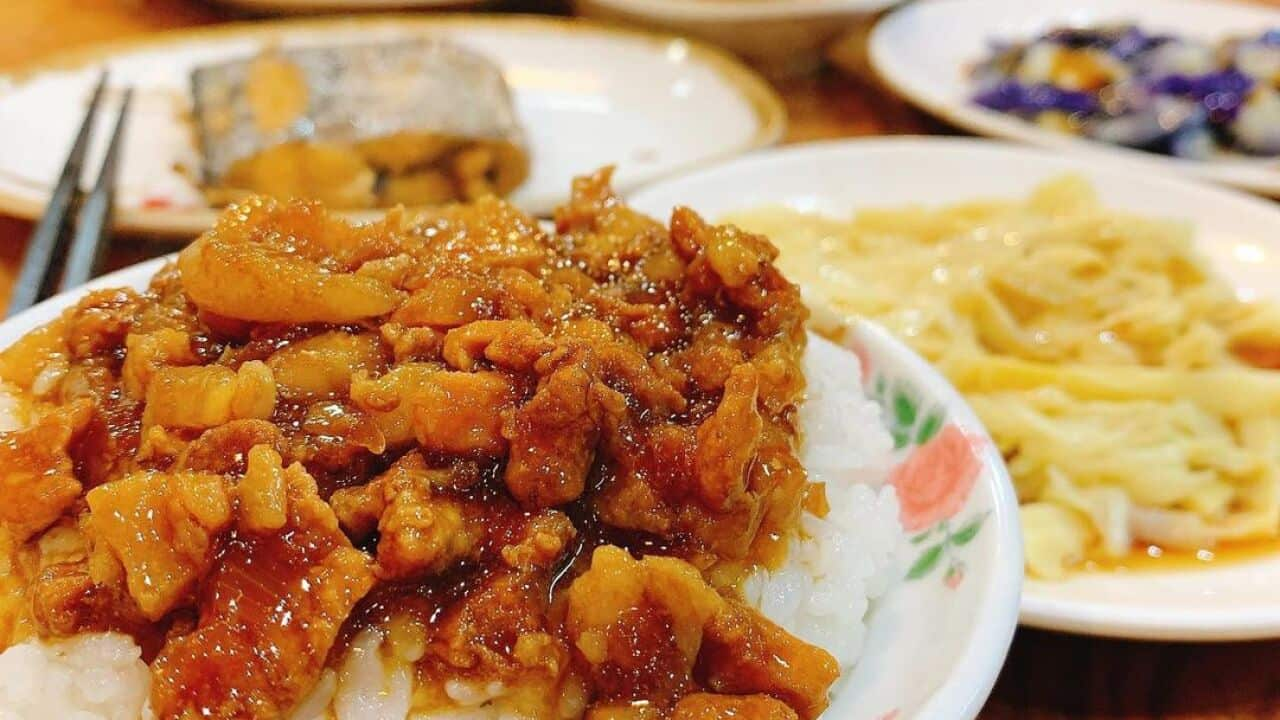In Taiwan, night markets fill the streets. Push carts sell oyster pancakes, blood cakes dusted with peanuts and stinky tofu. These delicious dishes may seem foreign to Australians, but to the people of Taiwan, they are delightful side dishes eaten for dinner and as a midnight snack.
One of the food carts in Taiwan that many non-Taiwanese food bloggers don't write about is a dish that Taiwanese families love: braised giblets (chicken offal). They are braised in a rich, fragrant soy sauce broth and slowly simmered until they absorb the broth's flavours.
Because many Taiwanese homes are small, not many people deep-fry. Instead, they braise. I am also a braiser. I do this when I make my mum'slou rou fan, a braised pork dish. I also braise vegetables to maintain their nutrients and retain the juice of eggplant and root vegetables when I don't want to turn on the oven and convert my apartment into a furnace.
QUESTION ANSWERED

Why my mum's Taiwanese pork stew tastes better the next day
Soy-braised giblets work as a main meal when served with freshly steamed rice. The soy broth can be drizzled liberally over the rice. However, one of my favourite ways to eat soy-braised giblets is in a sandwich.
For my school lunch, mum would slice chicken liver, gizzards and soy-braised eggs, and put them in a sandwich with fresh lettuce and a squirt of mayo before sprinkling in roughly chopped coriander.
When I was a child, my mum would braise oyster blades and pork knuckle in a soy sauce broth for a day and we would eat for dinner with rice or noodles. The next day, mum would add giblets, like chicken gizzards and liver, along with firm tofu. For my school lunch, mum would slice the gizzards, liver and soy-braised eggs, and put them in a sandwich with fresh lettuce, a squirt of mayo and a sprinkle of roughly chopped coriander. Let's just say this sandwich was not eaten at the playground, but behind the bike shed. I didn't do this out of embarrassment, but to avoid interruptions.
The texture of soy-braised giblets is often described as 'Q'. The definition of 'Q' in Taiwan is basically food with chew or bounce. Mochi should have 'Q' and steamed buns have Q-factor if they've got bounce.
The reason why braising works so well for giblets, and oyster blade too, is the muscle surrounding the gizzards and in meat breaks down when slowly simmered and cooked, allowing them to absorb all the flavours.
Taiwan is not the only country to stuff offal into a sandwich. In Greece, the kokoretsi roll is made up of heart, lung, kidney and stomach, which is skewered and cooked on a barbecue. In Italy, the is a dish from Catanzaro and is made of tripe, offal and tomatoes stuffed in a pitta.
Soy-braised giblets
Ingredients
- 500 g mix of chicken liver and gizzards, washed and cleaned by your butcher
- 2 spring onions, washed
- 4 slices of ginger, or a knob if you want more heat
- 2 tbsp sugar
- ½ cup rice wine
- ¾ cup soy sauce
- 4 cups water
- Taiwanese spice mix from your Asian grocer or star anise and a cinnamon stick
Method
- Wash the giblets under cold running water and drain.
- In a large pot, boil water and blanch the giblets, then run the giblets under cold water. Drain well.
- In a clean pot, combine all the ingredients and spice mix if using, and bring the broth to a boil before reducing to a simmer.
- Simmer for 30 minutes until the giblets are tender.
- Leave them to soak in the broth until ready to eat.
- Stuff into steamed buns or a soft white roll and serve with roughly chopped coriander.






